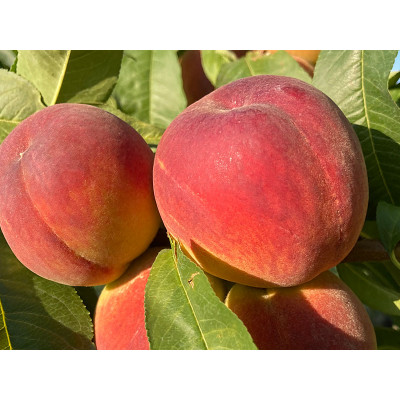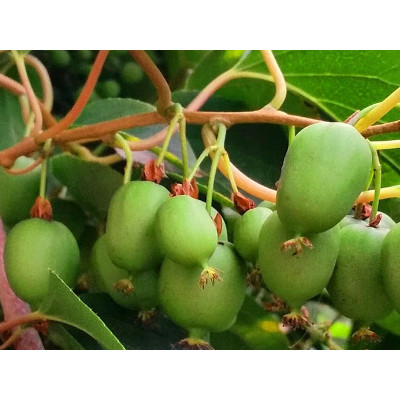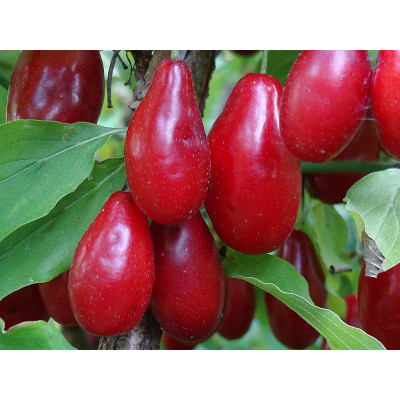Honeysuckle-Haskap GIANT'S HEART
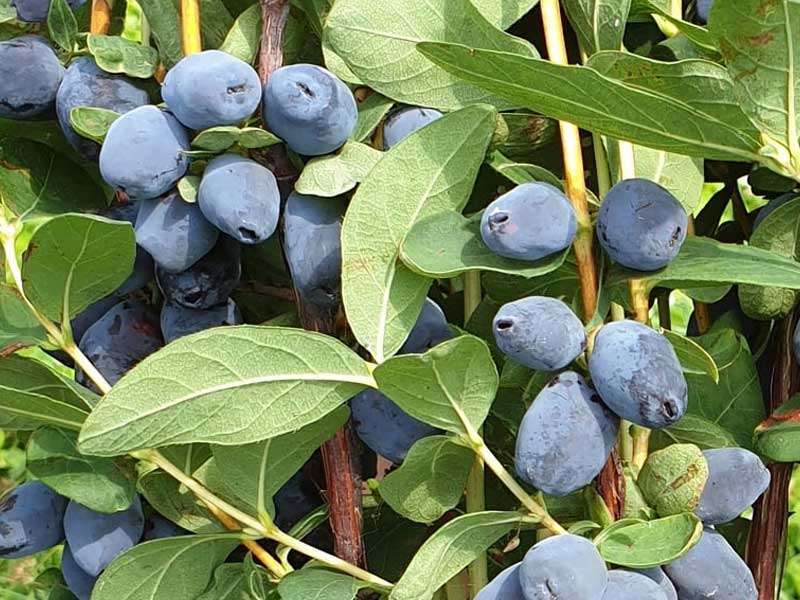
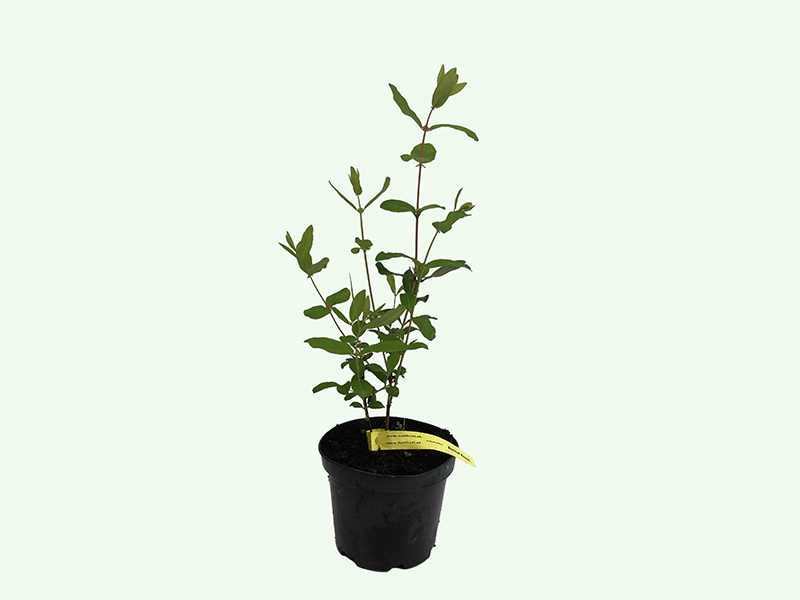

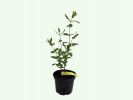
- The shipping price depends on the weight of the ordered goods (the more products, the cheaper the price)
- after you have placed the plants in the shopping cart, enter “calculate provisional shipping price” in the shopping cart, after entering the data the eshop will calculate the provisional shipping price for you.
Ask a Question About This Product
| Specifications | |
| Height at sale | 50cm |
| Pot | C2 |
| Sell as | 2 years old |
| Ripening time | Juny |
We send goods on Monday, Tuesday, Wednesday, by agreement also Thursday or Friday.
- Stock: In Stock
- Model: Lonicera caerulea
Honeysuckle-Haskap Giant's Heart is a very tasty variety ripening during the second half of June. In some areas it can ripen as late as July. Its name refers to the shape of the large, firm fruits, which can really look like little blue hearts. Abroad, descriptions of the taste of these berries repeatedly mention a combination of blueberry and raspberry flavours. However, the Honeysuckle-Haskap fruit stands out with its size of about 3 cm. They are characterised by their pleasant sweet taste and juiciness. From a single mature bush, we can get more than 4 kilograms of fruit over time. It is popular for the quality of the fruit, its fertility and many other qualities, for which it is popular and often sold out in English-speaking countries. It is not self-pollinating, so requires the company of a similar flowering variety with fruit ripening at the same time. For example, Strawberry Sensation, Boreal Beast, Boreal Blizzard, or Blue Treasure are considered suitable pollinators.
Honeysuckle-Haskap kamchatka (lonicera caelurea) as a species
Honeysuckle-Haskap kamchatka (Lonicera caerulea) is the only representative of Honeysuckle-Haskap , which are also known as ornamental and climbing plants. Honeysuckle-Haskap berries are increasingly popular, although its name is not as established in the market and among consumers as it is with other fruit species. Also colloquially and popularly called the Kamchatka blueberry, it forms a dark purple berry that can be classified as a first fruit in the garden. Early varieties can bear as early as April or May, and some of them produce tasty fruit during the summer. The fruit, which resembles blueberries in colour and several other characteristics, has a similar flavour between the varieties, although less pronounced, and thus differs from the classic blueberry. The taste of the fully ripened fruit is a pleasant addition to any garden where the Honeysuckle-Haskap kamchatka can be a vanguard for other fruits, for example in gardens where it is planned to benefit from the successive ripening of different species.
Growing Honeysuckle-Haskap kamchatka
Honeysuckle-Haskap has a number of essential characteristics that greatly increase its attractiveness to growers. The plant produces small yellow or greenish-yellow flowers relatively early, and the flowers themselves are characterised by excellent frost-resistance, which allows this fruit to be grown in the more northern regions of Slovakia. The blossom is often said to be resistant to -7°C (USDA zone 5). It is important to summarise a number of characteristics in a few points, as they may be decisive in your choice.
- Growing Honeysuckle-Haskap does not require soil with acidic pH values
- It is fully hardy, significantly resistant to diseases and pests, both in terms of the plant and the fruit.
- It produces young shrubs one year after planting (ideally the container plants in our range, whose roots are not weakened in any way that could inhibit growth). Higher yields come in the third year and more.
- It is a long-lived and hardy shrub, reaching or exceeding 1,5 metres in size.
- The fruits are high in vitamins A, B, C, P, iron and other beneficial substances.
- The leaves, crown and overall growth are similar to blueberries, but the leaves are more elongated and finer. The fruit is more elongated, possibly shaped into the peculiar shapes typical of the fruit, or may resemble the fruit of an olive tree (depending on the variety)
- Dry branches and shoots are removed or the plant is cut back as necessary - for aesthetic reasons, for example. However, the plant itself does not require any intervention for the first few years after planting.
- Honeysuckle-Haskap kamchatka requires a pollinator. Another variety flowering at the same time is ideal.
- The use of the fruit for direct consumption and processing can be compared to all uses, as with blueberries.
- If the plant is planted during early spring, care is needed to avoid shriveling the flowers and to keep them free from damage and abrasion. Otherwise, the plant can be planted throughout the year when the ground is not frozen.
Honeysuckle-Haskap is an excellent and undemanding substitute for blueberries
Growers' experience with classic blueberries is met with their demands for acidic soil and suitable fertilizers. The grower who does not have the means to provide soil with the appropriate pH, does not have the experience to care for them, or needs to rely directly on their own garden soil without interfering with the composition, can rely on Honeysuckle-Haskap . It does not require a specific pH, but will thrive in any humid garden soil that other plants thrive in. Acidic soil won't harm it, but it will produce excellent results when grown sparingly with added nutrients. For example, in the form of home-ripened compost or suitable fertilisers for berries.















